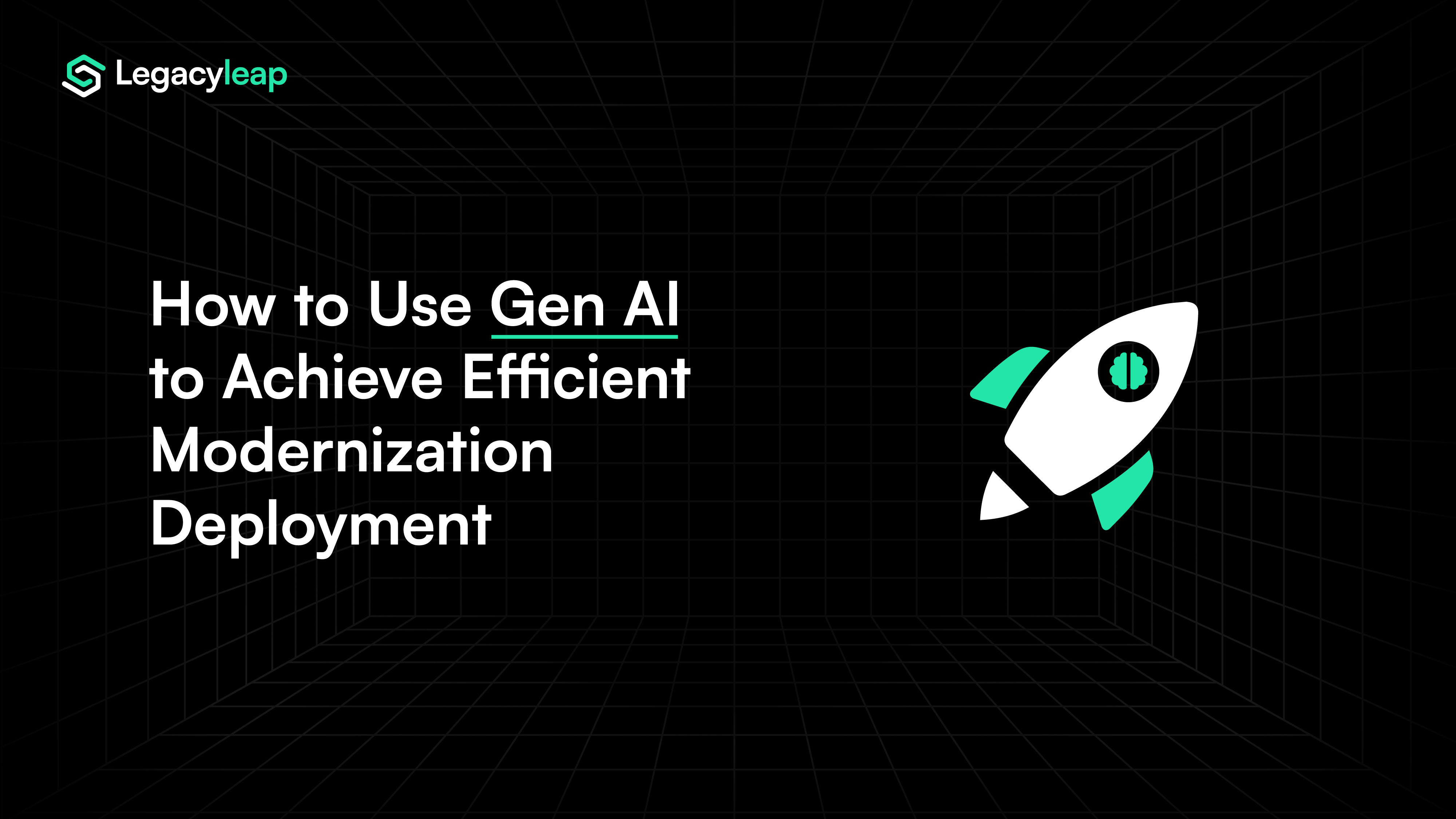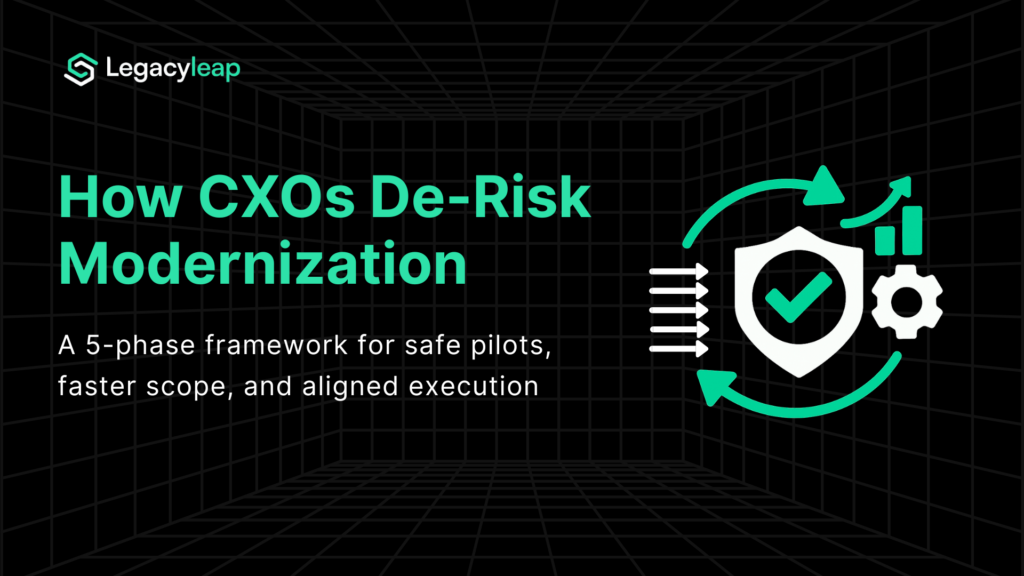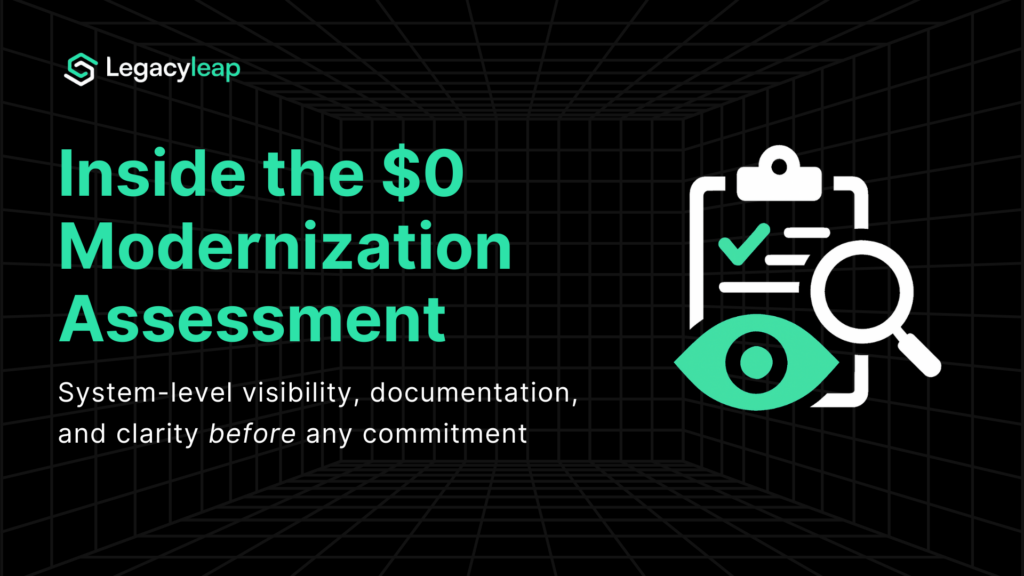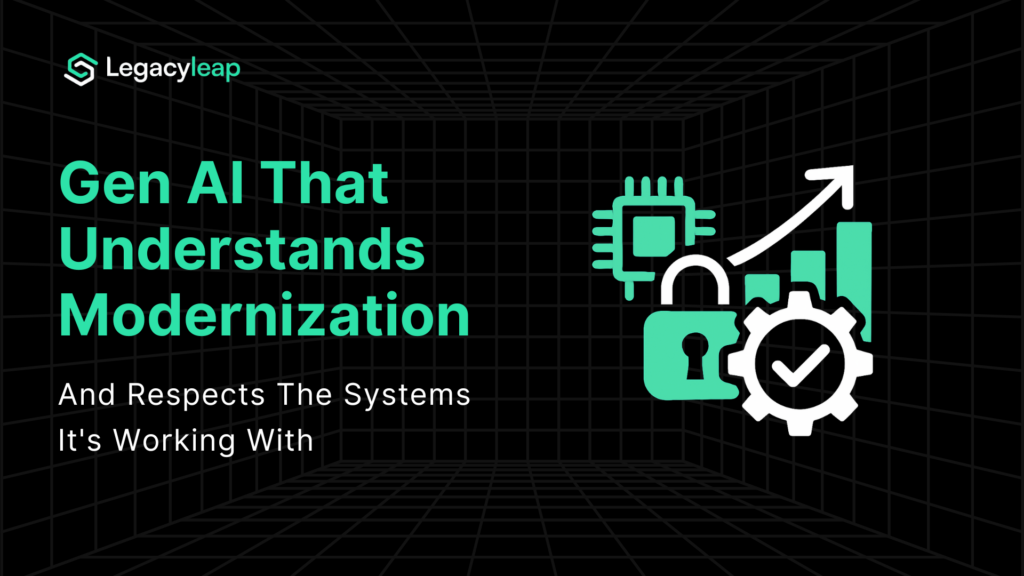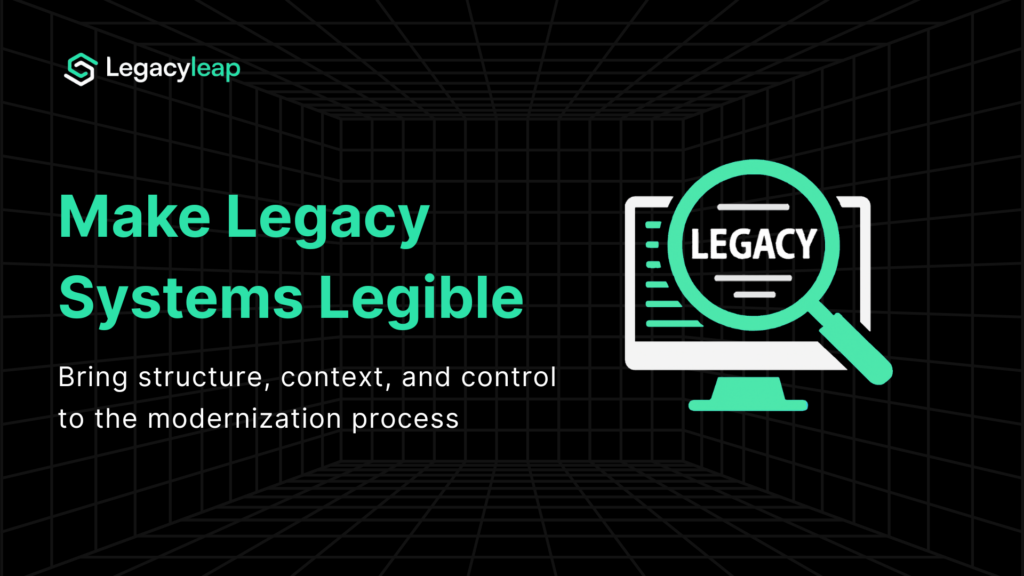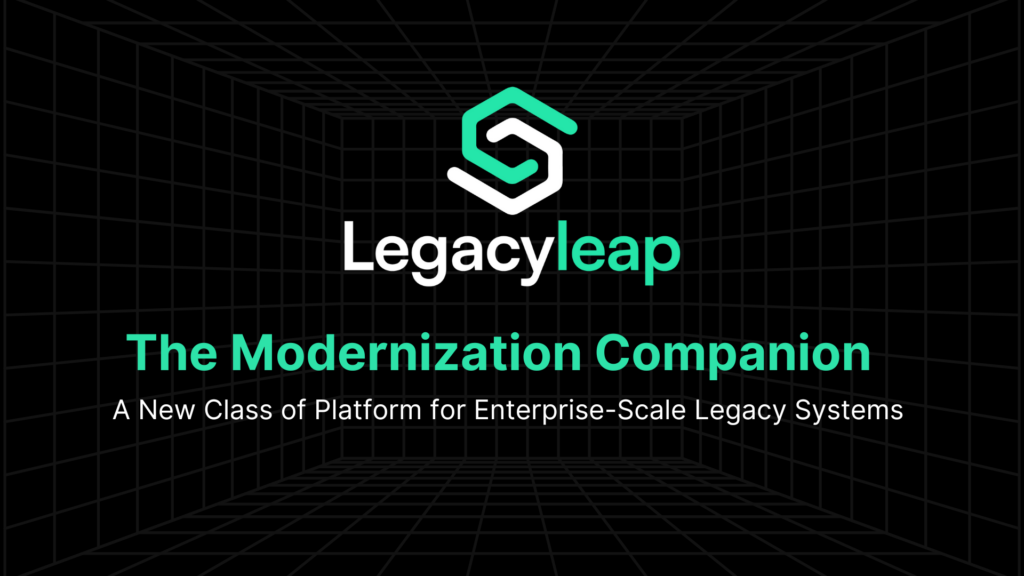The deployment phase of modernization often feels like walking a tightrope—balancing new systems’ potential with the operational risks of introducing them.
Traditionally, deployment involves incremental rollouts, extensive manual configurations, and an unending testing cycle and adjustments. While these processes aim to minimize disruption, they frequently fall short due to outdated tools, technical debt, and unforeseen compatibility issues.
Gen AI is flipping the script. Automating complex workflows, generating deployment artifacts in real-time, and intelligently adapting to legacy system quirks turn deployment from a headache into a highlight, bridging yesterday’s systems with tomorrow’s capabilities.
In this blog, we’ll explore the pitfalls of traditional deployment and how Legacyleap leverages Gen AI to overcome them. From automation that eliminates human error to custom solutions designed for enterprise-grade challenges, we’ll showcase how we can help businesses deploy confidently, quickly, and precisely.
The pitfalls of traditional deployment
For many organizations, deployment in modernization projects is where ambitions meet reality and the cracks begin to show. What should be the culmination of innovation often becomes a test of endurance, with teams battling against the limitations of outdated methods and resources.
Here’s why traditional deployment processes often fall short:
1. Incremental rollout difficulties
Gradual change sounds like the safest route, but managing incremental rollouts can feel like a minefield. Misaligned timelines, disrupted workflows, and insufficient user training compound the challenges, leaving teams scrambling to adapt while ensuring business continuity.
2. Tool and resource limitations
Modernization requires modern tools, yet many teams find themselves relying on outdated or generic solutions. Without intelligent tools to handle monitoring and scaling, deployments become inefficient, labor-intensive, and prone to failure.
3. Communication gaps
Even the best technology can’t compensate for poor communication. When expectations aren’t managed effectively, users often face confusion about the system’s capabilities, leading to dissatisfaction and resistance that undermine modernization efforts.
4. Insufficient testing
Rushed testing—or worse, skipped testing—can unleash a storm of post-deployment bugs. Critical issues missed during quality assurance not only derail operations but also erode trust in the new system.
5. Technical debt and incompatibilities
Legacy systems carry the baggage of decades-old code, complex dependencies, and undocumented quirks. Deployment often exposes these hidden challenges, resulting in integration issues that disrupt business processes and delay progress.
These challenges underscore the importance of a smarter, more adaptive deployment approach. And this is where Gen AI steps in.
How Legacyleap automates deployment with Gen AI
Deployment is often considered the finish line in modernization projects, but for Legacyleap, it’s a pivotal opportunity to deliver innovation. Leveraging the best of what Gen AI can do, we’ve reimagined the deployment process to eliminate inefficiencies, reduce errors, and ensure seamless integration across any infrastructure.
With traditional deployment marred by manual efforts, technical bottlenecks, and time-consuming workflows, Legacyleap introduces an automated, intelligent approach powered by a combination of advanced Gen AI capabilities and human expertise tailored to meet the unique demands of modernization.
Automated deployment artifacts generation
At the core of Legacyleap’s deployment process is the automated generation of deployment artifacts—an often-overlooked, yet critical aspect of modernization. These artifacts act as the building blocks that enable smooth and efficient application deployment across diverse environments.
Legacyleap can dynamically generate deployment artifacts tailored to the target infrastructure. To name a few, these include:
- Helm Charts for Kubernetes: Simplifying containerized deployments with preconfigured templates that streamline scaling, updates, and monitoring.
- Terraform Scripts for EC2: Automating resource provisioning and ensuring infrastructure is deployed consistently and efficiently.
Key Benefits:
- No manual intervention: By automating artifact creation, Legacyleap eliminates the need for error-prone, labor-intensive manual processes.
- Faster deployment times: With ready-to-deploy artifacts, organizations can move from testing to production in a fraction of the usual time (~60% faster).
- Enhanced reliability: Automated scripts reduce the risk of misconfigurations, ensuring a smoother transition to modernized environments.
This level of automation ensures that deployment becomes a streamlined, repeatable process rather than a stumbling block. In doing so, Legacyleap empowers organizations to focus on innovation while leaving the complexities of deployment to Gen AI.
The role of Legacyleap Studio
Central to Legacyleap’s deployment phase is the Legacyleap Studio, an all-encompassing platform designed to streamline modernization tasks with precision and efficiency. With specialized tools and interfaces, Legacyleap Studio ensures that both technical teams and business stakeholders can collaborate seamlessly throughout the deployment process.
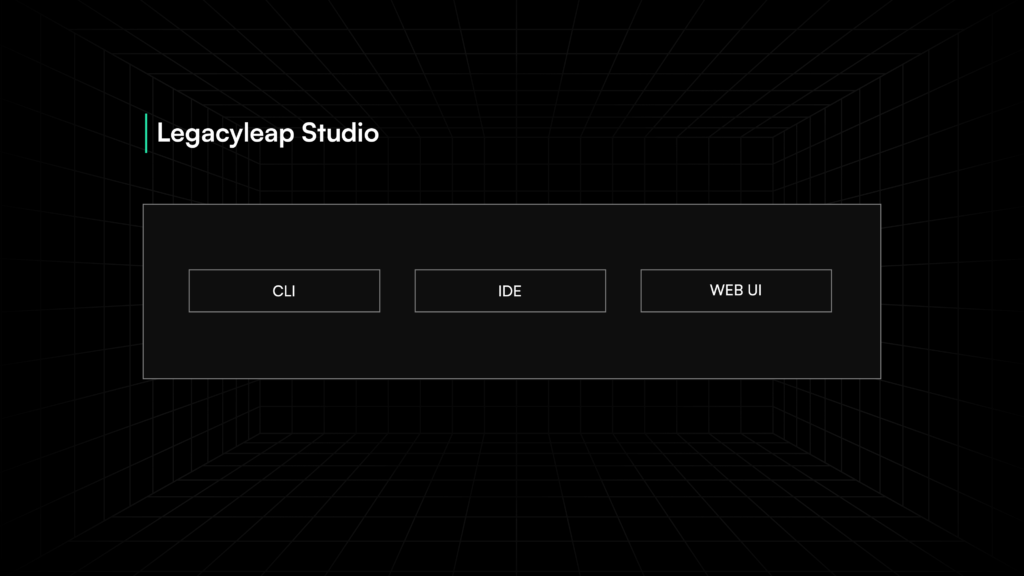
At the heart are three key interfaces—each purpose-built to address distinct aspects of the deployment process, from technical execution to strategic oversight.
1. CLI interface for long-running tasks
The Command Line Interface (CLI) is optimized for handling batch-oriented tasks that require processing across entire repositories.
Capabilities:
- Generates deployment scripts and comprehensive documentation at scale.
- Scans repositories to identify and resolve bottlenecks.
Advantages:
- Reduces the time required for long-running tasks.
- Increases consistency and efficiency in handling large codebases.
2. Custom IDE for legacy modernization
The Integrated Development Environment (IDE) in Legacyleap Studio is built specifically for legacy modernization.
Key Features:
- Adapted from platforms like IntelliJ or VS Code for a familiar user experience.
- Includes tools and widgets tailored to simplify modernization workflows.
- Supports efficient navigation of legacy codebases and integration with testing frameworks.
Benefits:
- Simplifies development workflows.
- Speeds up task execution and reduces errors.
3. Web UI for Governance
The Web UI provides a user-friendly interface for monitoring progress and overseeing the deployment process.
Features:
- A read-only dashboard for business users to track project milestones.
- Displays generated artifacts, reports, and documentation in real-time.
Advantages:
- Offers transparency and clear communication between technical and business teams.
- Helps stakeholders stay aligned on project objectives.
Legacyleap Studio’s interfaces and tools are purpose-built to ensure a smooth and efficient deployment process, minimizing errors and improving collaboration across all teams.
Unified AI Middleware, Fine-Tuning Pipelines & AI Agents
Legacyleap’s deployment framework seamlessly integrates fine-tuning pipelines, an advanced AI middleware layer, and collaborative AI agents to deliver unparalleled precision, adaptability, and scalability in modernization workflows.
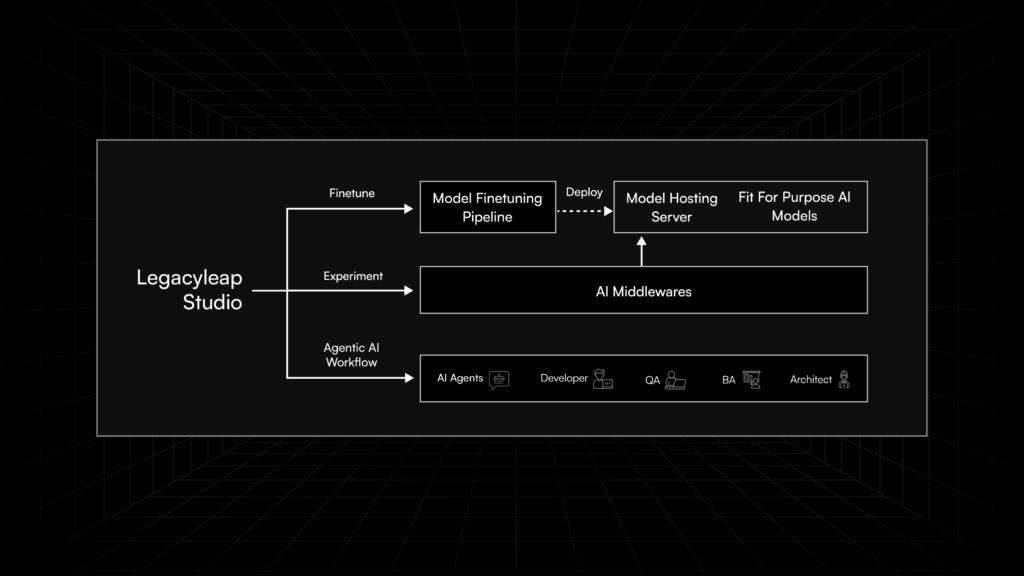
Fine-tuning for legacy systems
When modern LLMs lack sufficient training on obsolete technologies, such as mainframe code, Legacyleap employs a fine-tuning pipeline. This process enables LLMs to understand and process legacy systems accurately by training them on domain-specific data.
Hosted entirely within enterprise-owned or private infrastructure, this solution ensures all sensitive code and data remain securely within the customer’s firewall, addressing any concerns about data leakage.
AI Middleware for flexibility and experimentation
The AI middleware acts as a foundational layer that supports integration with any other technology stack like AWS Bedrock. It provides a robust platform for experimentation, allowing teams to identify the optimal model for specific tasks through prompt engineering and model tuning.
Additionally, the middleware decouples modernization services from the underlying technologies, ensuring quick adaptability as systems evolve. This approach eliminates the need for rewriting modernization workflows, reducing both time and effort.
AI agents for orchestrated modernization
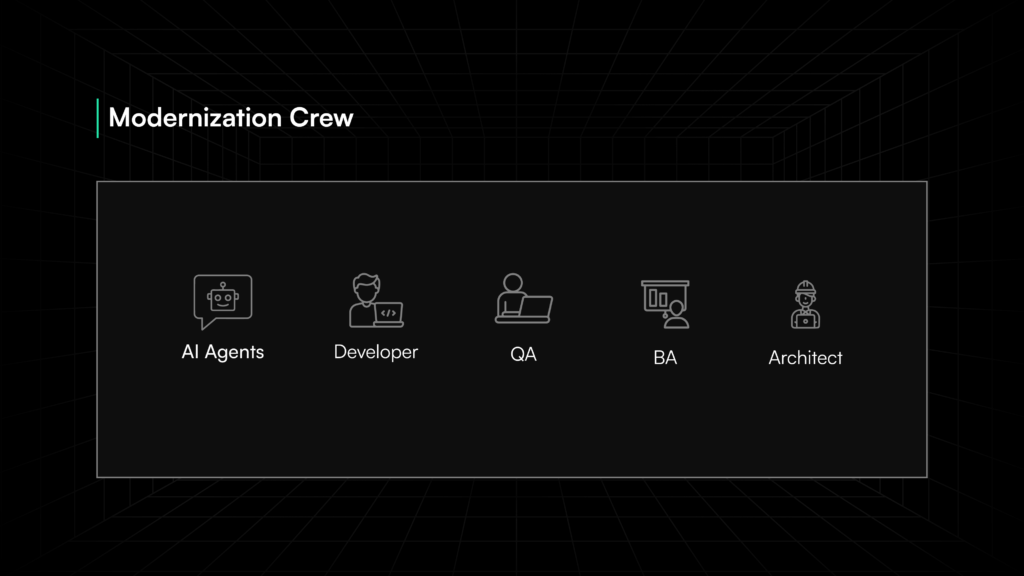
At the heart of the orchestration process are collaborative AI agents designed to interact with one another dynamically. These agents analyze tasks, communicate to find the best deployment solutions, and ensure that outputs are both accurate and efficient.
The workflow combines these AI-driven processes with a human-in-the-loop approach, integrating QA engineers, developers, architects, and business analysts to oversee and refine outcomes.
This combination of fine-tuned AI systems, a versatile middleware layer, and collaborative agentic workflows enables organizations to tackle even the most complex modernization challenges with confidence and ease using Legacyleap.
A smarter path to deployment with Legacyleap
Modernization deployment shouldn’t be a leap of faith, it should be strategic. With Legacyleap’s integration of AI-powered automation, cutting-edge middleware, and intelligent governance, your deployment process becomes faster, more efficient, and built for long-term success.
Legacyleap offers a clear pathway to seamlessly modernize and scale without compromising security or control by eliminating manual inefficiencies and ensuring flexibility across technologies.
With that said, this last stage is not the only phase of modernization where Gen AI helps. Curious to learn more? Here’s a detailed piece for you: How Can Gen AI Drive Every Step of Your Modernization Journey?
And if you want to dive deeper into Legacyleap’s modernization expertise, head over to our website to explore how we can help!

